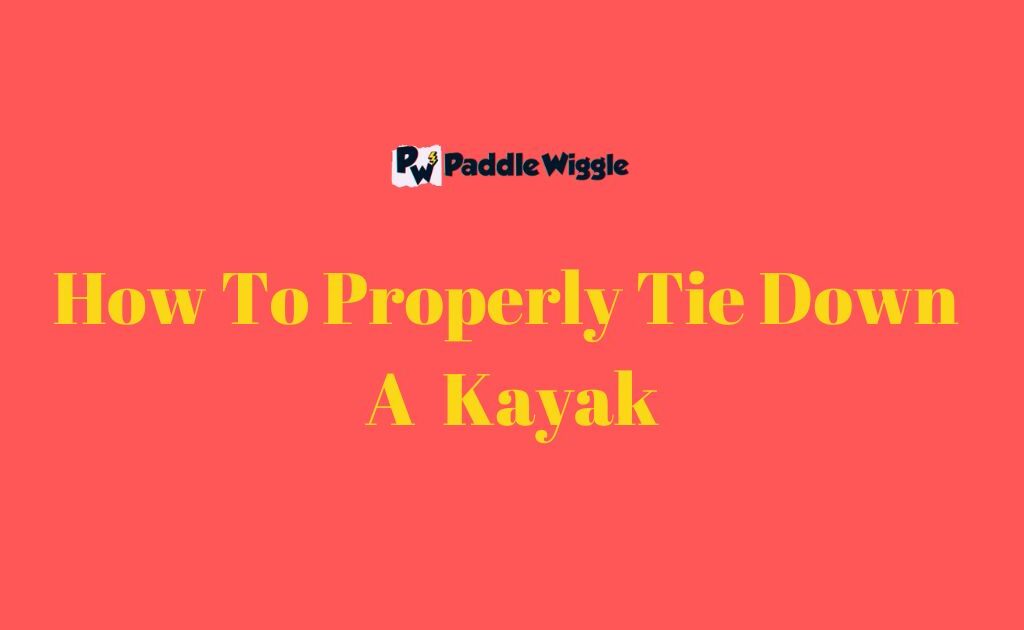Are you looking for a portable kayak that fits your kayaking needs? Well, you’re in the right place! Regular kayaks are great, but have you ever considered the benefits of folding and inflatable kayaks?
These innovative alternatives offer unique advantages that can enhance your kayaking experience.
Folding kayaks are super easy to carry around because they can collapse down. You can store them anywhere, making them perfect for adventurers on the move.
On the other hand, inflatable kayaks are super convenient because you can quickly blow them up and deflate them whenever you want.
Whether you like calm waters or exciting rapids, picking the right kayak type is really important. Hard shell kayaks are great for rough waters because they’re durable and stable. But if you prefer fun and relaxed paddling trips, folding and inflatable kayaks are perfect for recreational paddling.
So, which one should you choose – folding or inflatable? In this article, we’ll show you the differences between them, highlighting what they’re good at and what they’re not. And in the end, we’ll help you decide which kayak is perfect for your adventure.
Let’s dive deeper so that you make an informed decision.
Contents
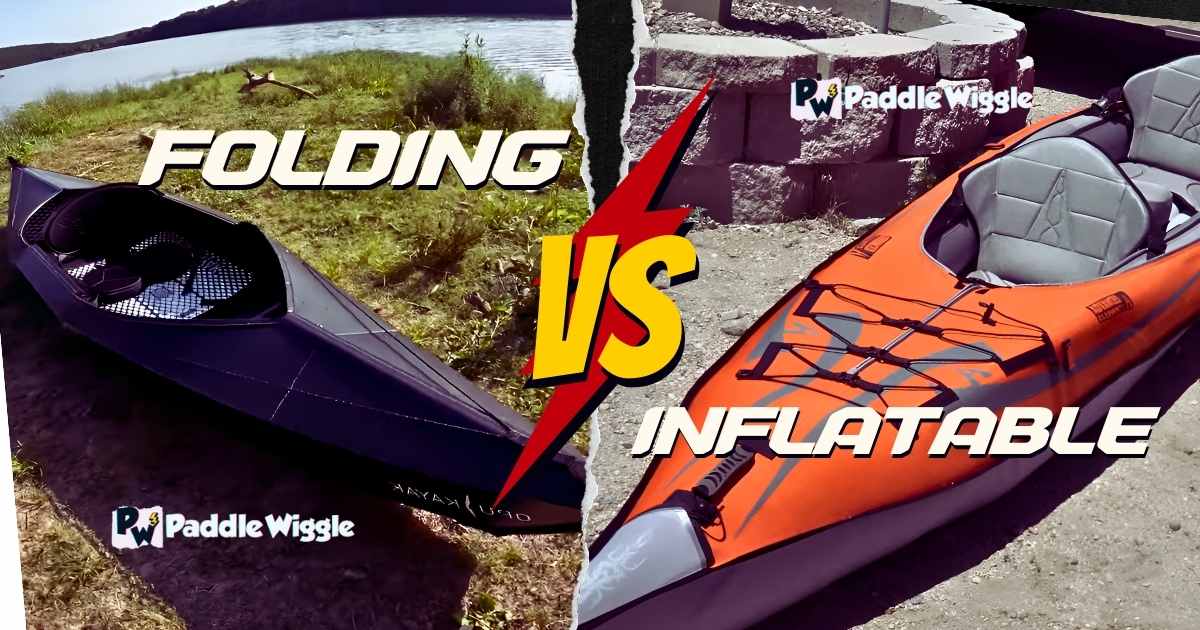
A Brief To Folding Kayaks
Folding kayaks are a special kind of portable watercraft with unique features that set them apart in the kayaking world.
They are made with advanced materials like polyurethane-coated fabrics and composites, allowing them to be folded into compact packages for easy transportation and storage. This makes them perfect for people with limited space or those who want to explore distant waters.
Here are some common features of folding kayaks:
Collapsible Design
Folding kayaks are designed to be collapsible. This means they can be easily folded down into small packages when you’re not using them. So you can store them away or carry them around conveniently.
Durability
Even though folding kayaks are flexible, they are built to withstand different water conditions. Whether you’re paddling on calm lakes or rough rivers, these kayaks are made to be sturdy and reliable for all your journeys.
Versatility
Folding kayaks are perfect for any water activity you have in mind. Whether you’re an adventurous explorer or want to enjoy a peaceful paddle on a serene lake, these kayaks can handle it all. They are up for any challenge!
A Brief To Inflatable Kayaks
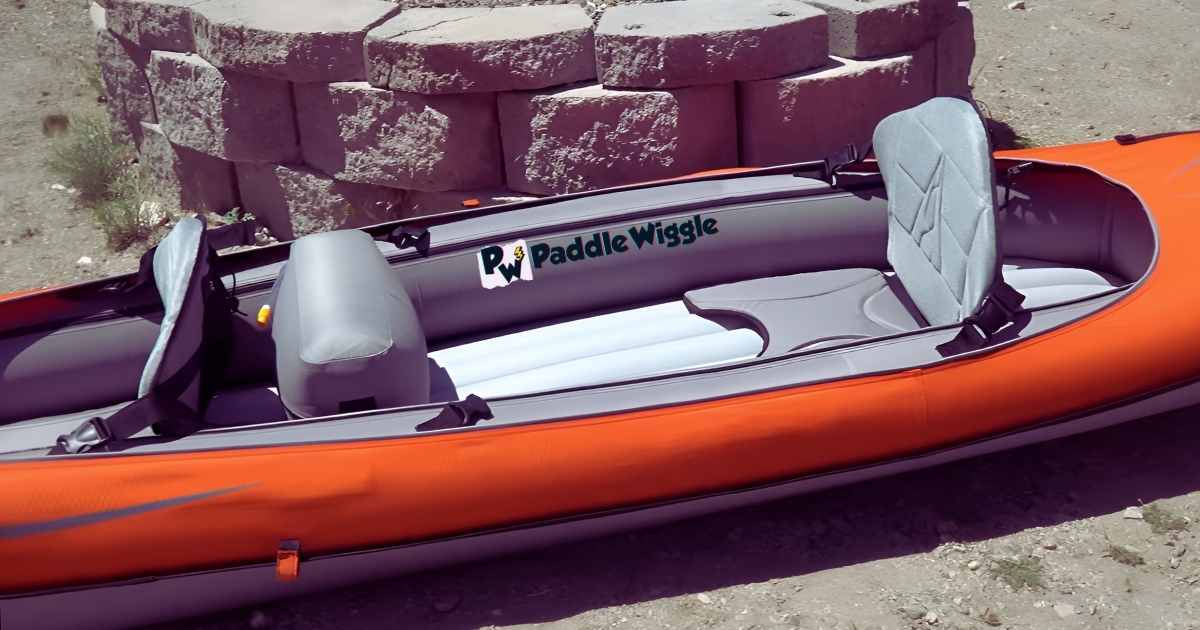

Water enthusiasts love inflatable kayaks because of their portability and ease of use. They can be inflated and deflated effortlessly, making them a great choice for beginners and experienced paddlers alike.
Here are some common features of inflatable kayaks:
Strong and Stable
Some high-end inflatable kayaks use special drop-stitch technology. This creates a strong and rigid structure, almost like a hardshell kayak, providing excellent performance on the water.
Easy Inflation and Deflation


Inflatable kayaks are simple to set up. Most come with air pumps or foot pumps for quick inflation. When you’re done paddling, deflating and packing them away is just as easy.
Durable Bottom
Many inflatable kayaks have a reinforced bottom to protect against bumps and rough surfaces in the water. This makes the kayak more resistant to damage.
Comfortable Seats
Inflatable kayaks often have adjustable padded seats and backrests. This means you can paddle comfortably for a long time. Ample legroom and well-placed footrests also help reduce fatigue and make the experience more enjoyable.
Comparison of Folding and Inflatable Kayaks
Both folding and inflatable kayak brings its own set of benefits and features, catering to different preferences and paddling styles.
Now let’s have a look at the common differences between them:
Differences in Construction Materials
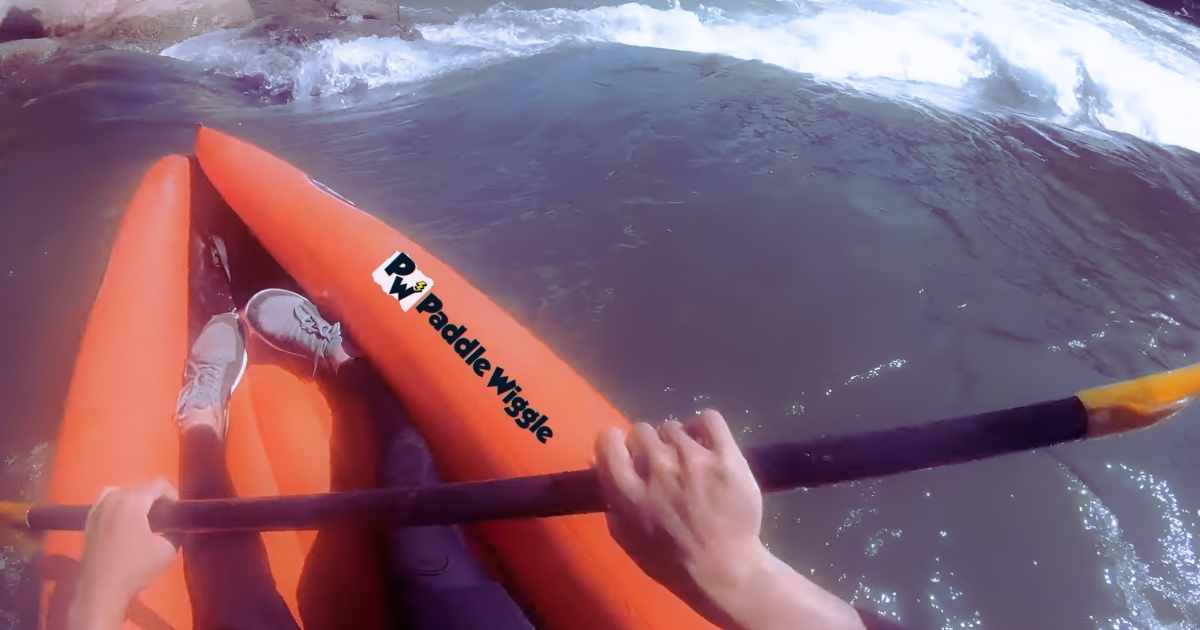

Folding kayaks and inflatable kayaks are made from different materials. They are also called semi-hard kayaks and use rigid materials like plastic or fiberglass. These materials make the kayak strong and stable.
So it can handle rough waters and rocks without losing its shape.
Inflatable kayaks, on the other hand, are made with flexible fabric like PVC or rubber-coated nylon. This allows them to be easily inflated and deflated, making them convenient to carry and store. Although some people may think the flexible fabric is less sturdy, modern inflatable kayaks are actually very durable and resistant to punctures.
Durability and Maintenance
Folding kayaks are known for their durability due to the sturdy materials used in their construction. With proper care and maintenance, they can last for a long time without getting too worn out. Just make sure to check the kayak regularly to see if there are any cracks or damages in the frame.
Inflatable kayaks need a bit more care. Even though they have tough materials that can handle punctures, they might still get damaged by sharp objects or rough surfaces. But don’t worry, many inflatable kayaks come with repair kits, so you can easily fix small leaks if they happen. With a little attention, your inflatable kayak can stay in great shape too!
Stability
When you’re kayaking, stability is really important because it affects how steady the kayak feels on the water. Folding kayaks have a big advantage in this area because they are solid and firm. They are made from tough materials like plastic or fiberglass, so they keep their shape well and offer better stability, even in rough waters. This means you can feel confident and balanced, even if there are waves or strong currents.
On the other hand, inflatable kayaks are more flexible, like inflatable pool toys. They are also durable, but their flexibility can make them slightly less steady than folding kayaks, especially in rough waters. But don’t worry, inflatable kayaks are designed to be buoyant, which means they can float well on calm waters and keep you safe.
Performance
Regarding performance, folding kayaks have an advantage when it comes to “tracking.” This indicates how well a kayak stays on course without drifting off because its rigid frames give it a straighter and more precise path in the water.
The streamlined design of folding kayaks also helps with “maneuvering.” This means they can easily change direction and turn smoothly. So, folding kayaks are a great choice if you want to navigate the water with ease and control.
On the other hand, inflatable kayaks, though not as fast as folding ones, still perform well in their own way. They may not have the same tracking abilities as folding kayaks, but they are still quite reliable on calm waters.
So, if you enjoy leisurely paddling and want to explore peaceful lakes or slow-moving rivers, inflatable kayaks will provide a pleasant and comfortable experience.
They are perfect for recreational purposes, allowing you to enjoy the beauty of nature at a more relaxed pace.
Versatility and Accessibility
Both folding and inflatable kayaks are versatile and can be used in different ways. Folding kayaks are great for long-distance adventures when you need to carry your kayak to faraway places. They’re perfect for camping trips or exploring remote areas with not many lakes or rivers nearby. You can fold them up and take them with you on your journey.
Inflatable kayaks are more accessible and easy to use. You can easily fit them in your car trunk and inflate them in just a few minutes. This makes them perfect for quick, spontaneous outings or fun times with family and friends.
Variations in Weight Capacity
The weight capacity of folding and inflatable kayaks is different. Hardshell kayaks usually have a higher weight capacity because of their solid build. They can carry heavier loads without losing stability or performance. This makes them great for longer trips or carrying extra gear, like camping equipment.
Inflatable kayaks generally have a lower weight capacity because they are lighter and more flexible. However, this doesn’t mean they are worse in performance. Inflatable kayaks are designed to be buoyant, so they can still handle moderate loads and remain stable on calm waters.
Expected Use
In terms of expected use, folding models are designed for solo kayakers who value portability and compactness. They are ideal for seasoned kayakers who do not plan frequent trips and aim for just a short solo paddle or explore remote areas.
Although foldable kayaks take slightly longer to set up than inflatable kayaks, they are strong and perform well on the water.
Inflatable kayaks, on the other hand, are versatile and cater to a broad range of users. They are suitable for recreational paddling, fishing, casual outings, and family adventures.
Inflatable models excel in stability and are often more forgiving for beginners. They are also popular for day trips, as they can be quickly inflated and ready for use.
Options And Cost
Both types of kayaks come in various designs and sizes to cater to different preferences. Folding kayaks often offer more customization options, such as adjustable seating positions or additional storage compartments.
In terms of cost, folding kayaks tend to be more expensive upfront due to their higher-quality materials and construction. However, they offer long-term value as they require less maintenance and have a longer lifespan. Inflatable kayaks are generally less expensive, making them popular for beginners or occasional paddlers.
Comparing Pros and Cons of Folding Kayaks
Folding kayaks are becoming really popular among outdoor lovers. They are portable and have some special benefits compared to regular hardshell or inflatable kayaks.
Let’s see what’s good and not-so-good about folding kayaks:
Advantages of Folding Kayaks
Folding kayaks have gained popularity among kayaking enthusiasts for several good reasons. While they do come with some downsides, as mentioned in the previous response, they offer a range of advantages that make them a compelling choice for many paddlers.
Here are some of the advantages of folding kayaks:
Sturdy Construction


Folding kayaks are built tough! They are made from strong materials like PVC-coated polyester or lightweight aluminum frames. This means they can handle rough waters and tough conditions, like rocky riverbeds.
Excellent Performance on Water
These kayaks are strong and perform really well on the water. Their sleek design helps them move smoothly through different water bodies. With good paddling skills, they can be as fast and agile as regular hardshell kayaks.
Long Lifespan
Folding kayaks are like long-lasting friends! If you take care of them, they can last for many years. They are made with high-quality materials and careful workmanship, making them a great investment for people who love going on kayak adventures.
Downsides of Folding Kayaks
Folding kayaks have gained popularity as a portable and space-saving alternative to traditional rigid kayaks. While they offer numerous advantages, such as easy storage and transportation, they also come with some downsides that potential buyers should consider:
Higher Price Range
Folding kayaks are great, but they can be a bit more expensive than other kayaks. This is because they use high-quality materials that make them strong and durable.
However, some people think the extra cost is worth it because these kayaks last a long time.
Complex Assembly Process
Putting together a folding kayak takes more time and effort than inflatables. Inflatable kayaks can be inflated in just a few minutes, but folding kayaks need to be unfolded and assembled with different parts. It may take some patience and practice, but it gets easier and faster once you get used to it.
Comparing Pros and Cons of Inflatable Kayaks
Inflatable kayaks have become popular because they are easy to use and cost less than regular hardshell and folding kayaks. They have many advantages, but there are also a few things you should think about before buying them.
Advantages of Inflatable Kayaks
While traditional hard-shell kayaks have long been the go-to choice for paddlers, inflatable kayaks have gained significant popularity in recent years.
These inflatable wonders offer a unique set of advantages that make them an appealing option for both beginners and experienced kayakers alike.
Here are a few advantages of inflatable kayaks:
Lightweight Design
One of the biggest advantages of inflatable kayaks is their lightweight design. Unlike folding models, which are comparatively heavy, inflatable kayaks are incredibly portable.
They can be easily deflated and folded into a compact size, allowing users to carry them in a backpack or store them in the trunk of their car.
This makes them an excellent choice for those who love spontaneous outdoor adventures or have limited storage space.
Easy Setup
Setting up an inflatable kayak is a breeze compared to assembling a traditional kayak. Most inflatable models come with a manual air pump that allows users to inflate the kayak quickly within minutes.
So you don’t need extra tools or complicated assembly.
With just a few simple steps, you’ll be ready to hit the water in no time.
Affordable Price Point
Inflatable kayaks are generally more budget-friendly than their folding counterparts. They often cost significantly less while still providing an enjoyable paddling experience.
It’s a great option for anyone who doesn’t want to spend too much or has just started the sport.
Downsides of Inflatable Kayaks
Inflatable kayaks undoubtedly offer several advantages, including portability and affordability. However, potential buyers must also be aware of the downsides associated with these watercraft, including durability concerns, performance limitations, setup time, and water tracking issues.
Here are a few downsides of inflatable kayaks:
Vulnerability to Punctures or Leaks
Inflatable kayaks can be sensitive to sharp objects like rocks or branches, and accidents can happen. Even though they use durable materials, it’s essential to be careful during use and transportation.
Choosing a kayak made from high-quality materials like PVC or reinforced fabric can help reduce the risk. And having a repair kit handy can quickly fix any small holes that may happen.
Slower Speed in the Water
Inflatable kayaks are not as fast or maneuverable as hardshell kayaks. The material they are made of creates more drag on the water, making them slower.
But don’t worry! The speed might not be a big deal if you’re having fun and enjoying the outdoors. Inflatable kayaks are still great for recreational paddling and beginners.
Even with these points, inflatable kayaks are loved by many outdoor enthusiasts for their portability, affordability, and ease of use.
How to determine which one is Best for you? Folding or Inflatable?
Deciding whether to choose a folding kayak or an inflatable kayak can be challenging. Each option has its own pros and cons, so it’s essential to think about what matters most to you.
Here’s a comparison table to help you determine the best type for you:
| Comparison | Folding Kayaks | Inflatable Kayaks |
|---|---|---|
| Materials | Sturdy construction with PVC-coated polyester or lightweight aluminum frames | Made from flexible materials like PVC or rubber-coated nylon |
| Performance on Water | Excellent performance on water with sleek design and efficient maneuverability | Decent performance on calm waters, less speed and maneuverability compared to folding kayaks |
| Weight | Higher weight capacity, suitable for longer | Lower weight capacity, suitable for moderate loads |
| Capacity | expeditions and carrying extra gear | and casual paddling |
| Maneuverability | High maneuverability through the waterdue to rigid frames and streamlined design | Good maneuverability on calm waters but may not perform well in rough waters |
| Speed | Faster speed and agility due to rigid construction | Slower speed due to flexible materials |
| Assembly | More challenging to repair, and may require professional assistance for major damages | Easy setup with quick inflation, minimal assembly required |
| Life Span | Long lifespan with proper care and maintenance | Durable with proper care, may require occasional patching for punctures or leaks |
| Price Range | Higher price range compared to other kayak options | Generally more affordable, budget-friendly |
| Portability | Less portable due to larger size and weight | Highly portable, can be deflated and carried in a backpack or car trunk |
| Stability | Offers better stability, suitable for rough waters and challenging conditions | Slightly less stable due to flexible construction |
| Storage | Requires more storage space due to its rigid structure when not in use | Requires less storage space, can be deflated and stored in a compact size |
| Repair | Easier to repair with a provided repair kit for minor punctures or leaks | Easier to repair with provided repair kit for minor punctures or leaks |
Here are some other factors to consider when making your decision:
Storage and Transportation
An inflatable kayak might be better if you have limited space or no roof racks on your vehicle. They are compact and can be deflated, making them easy to store in a backpack or a small space. Folding kayaks need more room because of their rigid frames.
Skill Level and Water Activities
Consider your experience and where you plan to kayak. Inflatable kayaks are stable on calm waters like lakes and slow rivers, making them good for beginners. Folding kayaks are more suited for rough waters like coastal areas or open seas.
Frequency of Use
Think about how often you’ll use your kayak. An inflatable kayak could be enough if you go kayaking occasionally on weekends or vacations. They’re easy to set up and maintain. Folding kayaks require assembly each time you use them.
Activities on Your List
Consider what activities you want to do with your kayak. Inflatable kayaks can handle various activities but might not specialize in one specific type. Folding kayaks come in designs made for touring, fishing, and other activities.
Intended Use
Decide how you plan to use your kayak. An inflatable kayak is convenient if you like spontaneous trips and want flexibility. They’re easy to transport and can be inflated quickly. Folding kayaks are better for planned trips where you have time to assemble them.
And finally, pay attention to these:
- Size and Shape: Inflatable kayaks have different sizes and shapes to choose from. Folding kayaks often have a more traditional kayak shape.
- Water Conditions: A folding kayak with its rigid frame is a good choice if you want a kayak that can handle various water conditions.
- Maximum Weight Capacity: Check the weight capacity of each kayak. Inflatable kayaks usually have lower weight limits due to their materials.
- Inflation or Assembly: Inflatable kayaks must be inflated before use while folding requires assembly by connecting different parts.
- Shoulder or backpack: Think about how you prefer to carry your kayak. Inflatable ones can be carried in a backpack when deflated, while folding kayaks often have shoulder straps for carrying.
- Needs: If you often have limited space or travel, an inflatable kayak’s portability and compactness make it practical.
Choose an Inflatable Kayak If
Portability and Lightweight
Inflatable kayaks are portable and lightweight, perfect for spontaneous trips, and limited storage space if you need a kayak that is easy to transport and store.
Calm Waters
If you prefer paddling on calm waters like lakes and slow-moving rivers, inflatable kayaks offer a suitable and stable experience.
Beginner or Casual Paddler
Inflatable kayaks are a budget-friendly option if you are a beginner or a casual paddler and don’t require high-performance features for challenging water conditions.
Quick Setup
If you prefer the convenience of a quick and easy setup with minimal assembly, inflatable kayaks with simple inflation are a good fit.
One Best Folding(Oru Bay ST) Vs One Inflatable Kayak (Bote Lono Aero 12)
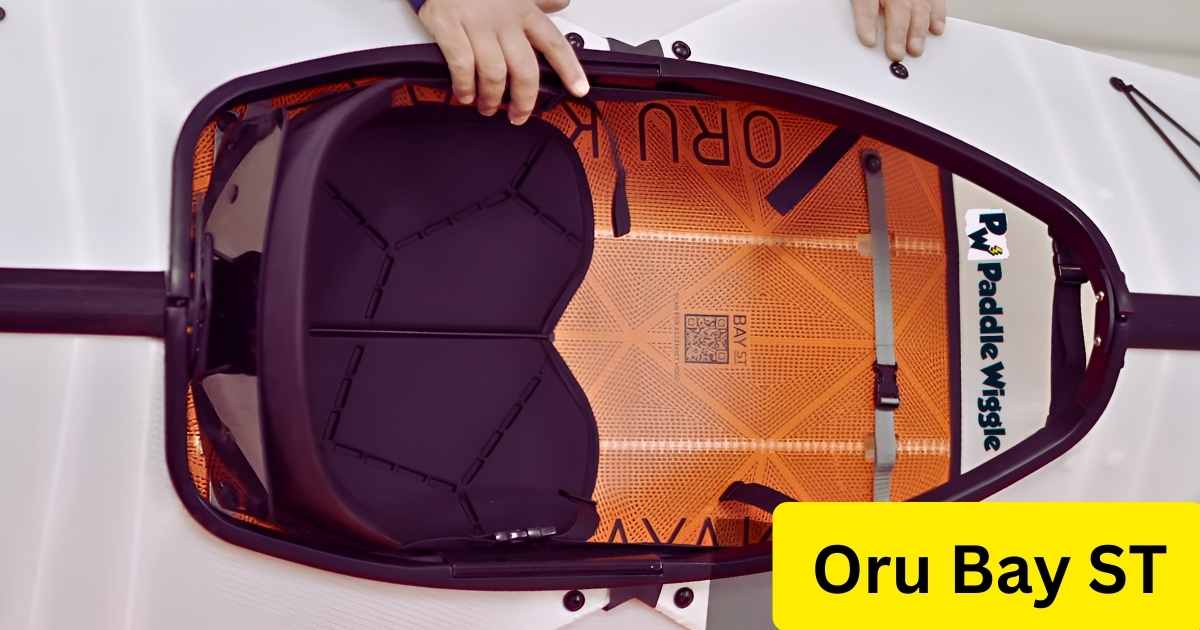

The Oru Bay ST folding kayak and the Bote Lono Aero 12’6″ inflatable kayak are two top picks that have gained significant popularity. Both models offer unique features and benefits that cater to different preferences and needs.
The Bay ST is a folding kayak that stands out for its innovative design. It’s made from a durable polypropylene material, making it lightweight yet sturdy.
It can be folded into a compact size, allowing easy storage in the trunk of your car or even under your bed.
With its sleek appearance and quick assembly time of approximately 10 minutes, the Bay ST is perfect for those who want convenience without compromising performance.
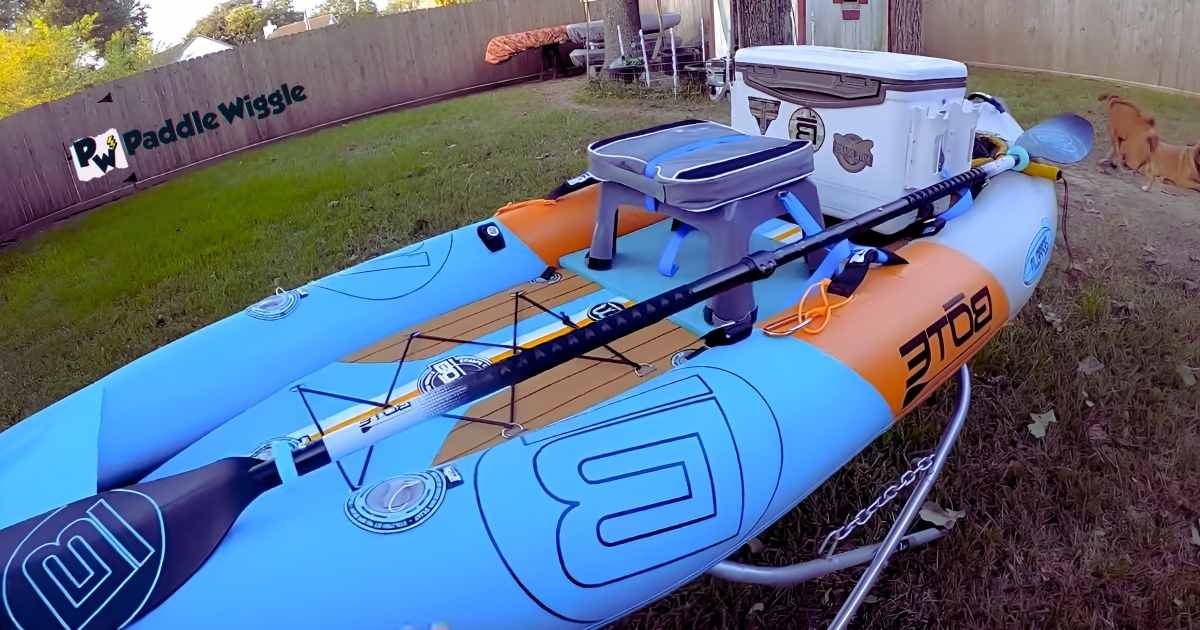

On the other hand, the Bote Lono Aero 12’6″ is an inflatable kayak designed for versatility. Its high-pressure construction ensures stability on both calm lakes and choppy waters.
It offers a spacious seating area with ample legroom, providing comfort during long paddling sessions.
This inflatable kayak comes with multiple air chambers, ensuring safety even if one chamber gets punctured.
So, if you prioritize convenience and easy storage, Oru Bay ST is an excellent option. Its foldable design allows for hassle-free transportation in any car model.
Additionally, its durable construction ensures long-lasting performance even in challenging conditions.
However, if you seek versatility and expense above all else, the Bote Lono Aero 12’6″ inflatable kayak is worth considering. Its lightweight nature and ability to deflate and pack into a small bag make it perfect for travelers or those with limited storage space.
Learn More
Are Folding Kayaks More Durable Than Inflatable Kayaks?
Folding kayaks are generally known for their durability due to the high-quality materials used in their construction. However, inflatable kayaks have also come a long way in terms of durability. It ultimately depends on the specific brand and model you choose.
Which One Is Faster, Folding Or Inflatable?
Folding kayaks are generally faster than inflatable kayaks due to their rigid construction, which reduces drag in the water and allows for better speed and agility.
Which Type Of Kayak Is Easier To Transport?
Inflatable kayaks are typically easier to transport because they are lightweight and compact when deflated. They can be easily carried in a backpack or stored in the trunk of a car. Folding kayaks, while sturdy, tend to be bulkier and require more effort for transportation.
Folding Vs Inflatable, Which One Performs Better?
The performance comparison between folding and inflatable kayaks depends on the specific conditions and intended use.
Folding kayaks generally perform better in challenging waters, offering superior stability and speed due to their rigid construction. They are well-suited for longer expeditions and carrying extra gear.
On the other hand, inflatable kayaks excel in portability and ease of use. They are ideal for calm waters and casual paddling, providing convenience with a quick setup and lightweight design.
Are There Any Budget-Friendly Options Available For Both Types Of Kayaks?
Inflatable modes are more budget-friendly than folding modes.
Final Words
To sum up, if you want a strong kayak that performs well in rough waters and you plan to go on longer trips with lots of gear, go for a folding kayak. But if you need a simple kayak to carry around, it works best in calm waters, and it is simple to set up, an inflatable kayak is the way to go.
Just think about what matters most to you and choose the kayak that fits your needs for the most enjoyable kayaking experience.

